
Uruguay, officially the Oriental Republic of Uruguay, is a country in South America. It shares borders with Argentina to its west and southwest and Brazil to its north and northeast, while bordering the Río de la Plata to the south and the Atlantic Ocean to the southeast. It is part of the Southern Cone region of South America. Uruguay covers an area of approximately 176,215 square kilometres (68,037 sq mi) and has a population of around 3.4 million, of whom nearly 2 million live in the metropolitan area of its capital and largest city, Montevideo.

This article deals with the diplomatic affairs, foreign policy and international relations of Uruguay. At the political level, these matters are officially handled by the Ministry of Foreign Relations, also known as Cancillería, which answers to the President.

Montevideo is the capital and largest city of Uruguay. According to the 2011 census, the city proper has a population of 1,319,108 in an area of 201 square kilometers (78 sq mi). Montevideo is situated on the southern coast of the country, on the northeastern bank of the Río de la Plata.

The 1930 FIFA World Cup was the inaugural FIFA World Cup, the world championship for men's national football teams. It took place in Uruguay from 13 to 30 July 1930. FIFA, football's international governing body, selected Uruguay as the host nation, as the country would be celebrating the centenary of its first constitution and the Uruguay national football team had successfully retained their football title at the 1928 Summer Olympics. All matches were played in the Uruguayan capital, Montevideo, the majority at the Estadio Centenario, which was built for the tournament.

Club Atlético Peñarol —also known as Carboneros, Aurinegros, and (familiarly) Manyas— is a Uruguayan sports club based in Montevideo. The name "Peñarol" comes from the Peñarol neighbourhood on the outskirts of Montevideo. Throughout its history the club has also participated in other sports, such as basketball and cycling. Its focus has always been on football, a sport in which the club excels, having never been relegated from the top division. The club traditionally plays in yellow and black-striped shirts.
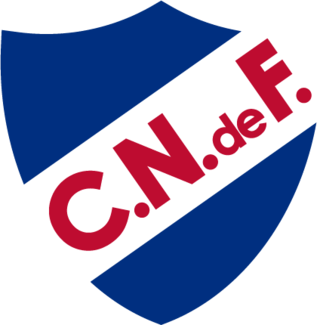
Club Nacional de Football is a Uruguayan professional sports club based in Montevideo.

Farinata, farinata di ceci, torta di ceci, fainé, fainá, socca,cecìna or cade is a type of thin, unleavened pancake or crêpe made from chickpea flour.

The Catholic Church in Uruguay is part of the worldwide Catholic Church, under the spiritual leadership of the pope.
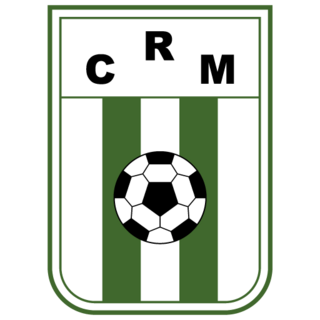
Racing Club de Montevideo is a football club from Montevideo in Uruguay. It currently participates in the Uruguayan Primera División Profesional since winning the Torneo Competencia in 2022.

Centro is a barrio of Montevideo, Uruguay. Its main axis is 18 de Julio Avenue, and it runs between Plaza Independencia and Ejido St, being the central business district.
Walter Oswaldo Cruz was a Brazilian chess master.

Germany–Uruguay relations are foreign relations between Germany and Uruguay. Germany has an embassy in Montevideo. Uruguay has an embassy in Berlin, a consulate-general in Hamburg and 6 honorary consulates. Germany is Uruguay's principal trading partner in the European Union.

Switzerland–Uruguay relations are foreign relations between Uruguay and Switzerland. Both countries share a long history of mutual economic relations, and they established diplomatic relations in 1828. Uruguay became a popular destination for Swiss migrants starting in the 1860s. In the 20th century, Uruguay has looked to Switzerland as a model for government, historical and cultural ties go back to at least the 19th century. There were 956 people with Swiss passports residing in Uruguay in 2008. Uruguay was described as the "Switzerland of the Americas" in a 1951 New York Times article for its popularity as a haven for capital fleeing Europe at the time and its adoption of Swiss-inspired banking laws. Thomas J. Knight also wrote that "Uruguay has for most of its history been the 'Switzerland' of South America."
Julio César Balparda Muró was an Uruguayan chess master.
Adhemar da Silva de Oliveira Rocha was a Brazilian chess player.
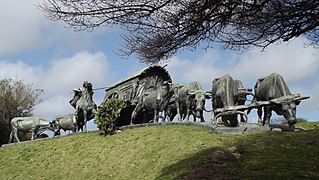
Parque Batlle, formerly Parque de los Aliados, is a barrio and a major public central park in Uruguay's capital city of Montevideo. It is named in honour of José Batlle y Ordóñez, President of Uruguay from 1903-1907 and 1911–1915.
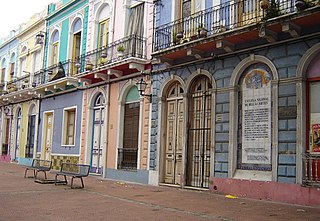
Villa Muñoz - Retiro is a barrio of Montevideo, Uruguay, bordering Aguada and Reducto to the west, La Figurita to the north, La Comercial to the east and Cordón to the south.
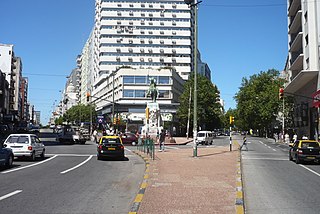
Cordón is a central barrio of Montevideo, Uruguay, located East of the Centro. Its main avenue is 18 de Julio Avenue.
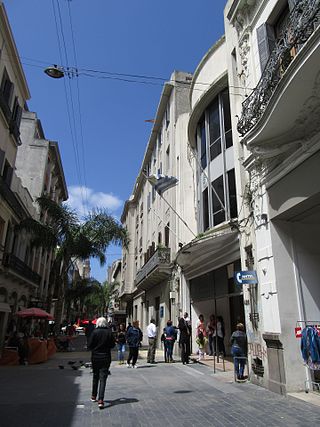
Peatonal Sarandí is an 0.5 miles pedestrian street in Ciudad Vieja, Montevideo, Uruguay. It is the main lane of the historic center, and one of the most touristic sites in the city, due to the fact that it is flanked by different architecturally notable buildings. The pedestrian street starts at the Gateway of the Citadel and ends at its intersection with Peatonal Pérez Castellano, while the remaining four blocks, up to the Rambla, are allowed for vehicles. As an extension of this street is the long southern breakwater of the Port of Montevideo, which has taken on the name "Escollera Sarandí".

Alba Roballo was a Uruguayan lawyer, poet, and politician, who served three consecutive terms from 1958 to 1971 in the Senate of Uruguay and a fourth term in the early 1990s. After graduating with a law degree from the Universidad de la República in Montevideo, she began to write. In 1942, her first book, Se levanta el sol, won first prize from the Ministry of Education. Later she founded two journals, Mujer Batllista and El Pregón. In 1954 she became the first woman to sit on the Montevideo Departmental Council and was elected Senator for the Colorado Party. A prominent Afro-Uruguayan, she was the first woman in South America to serve as a cabinet minister, appointed in 1968; she resigned this post following authoritarian actions by the government. She was a founder of the Frente Amplio in 1971 and though she ran for re-election, that year she was defeated.
















